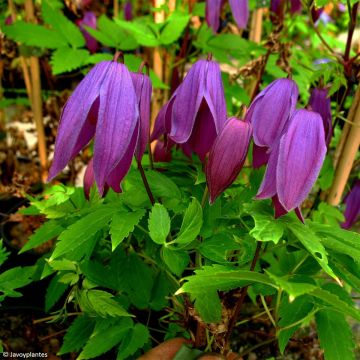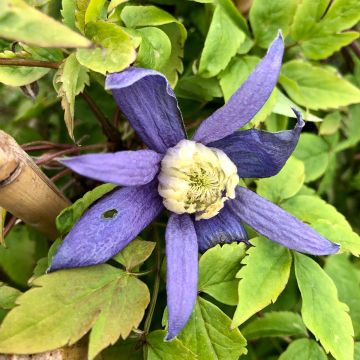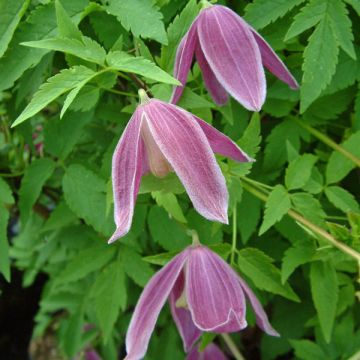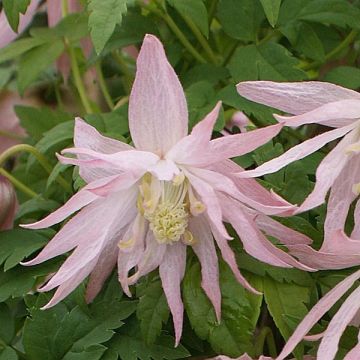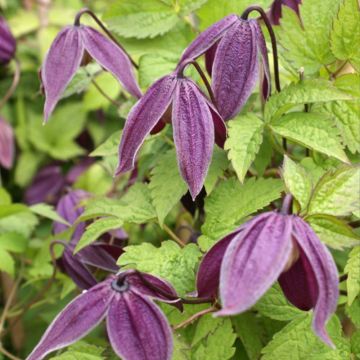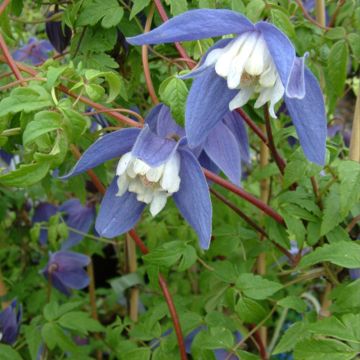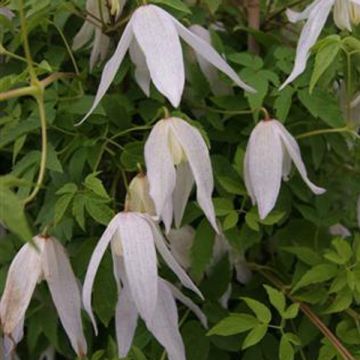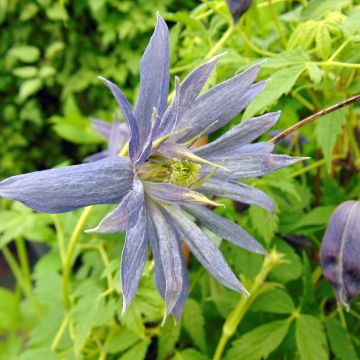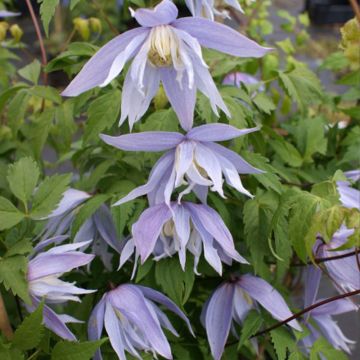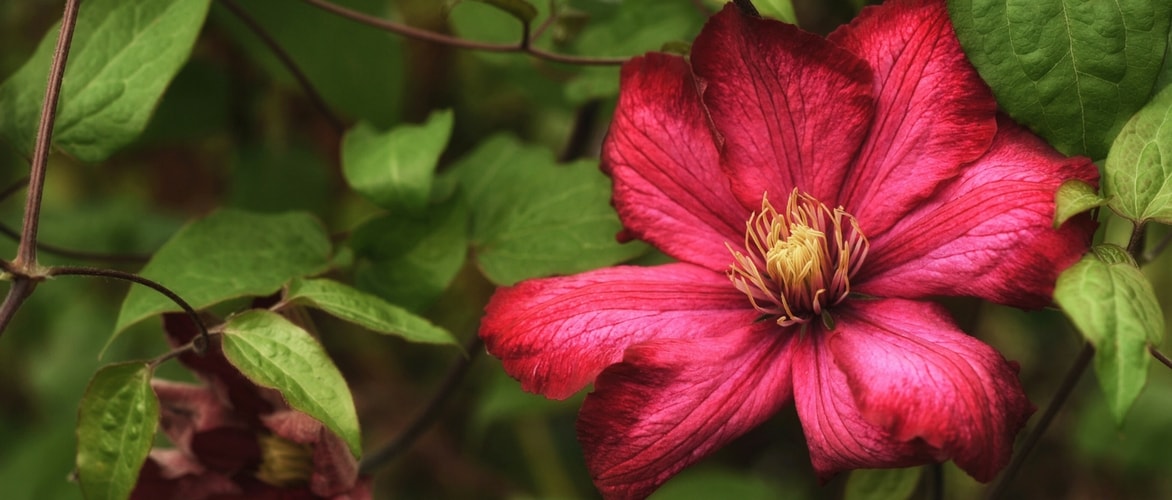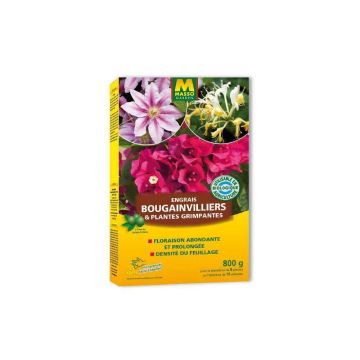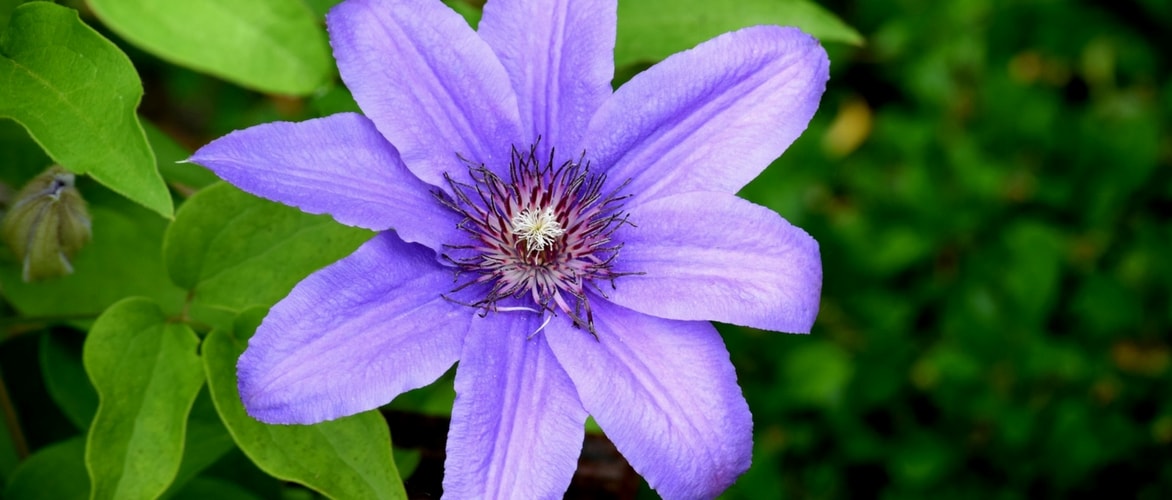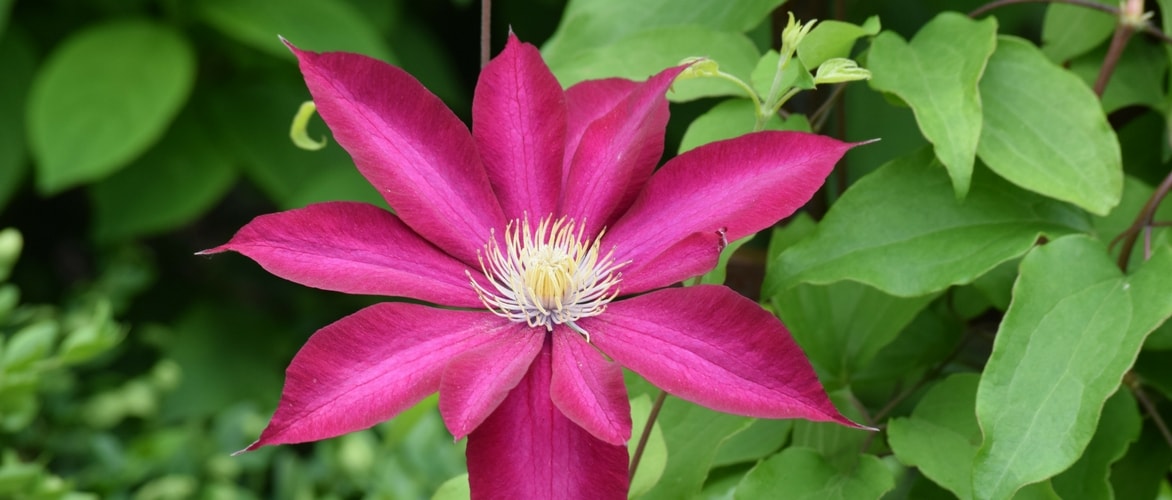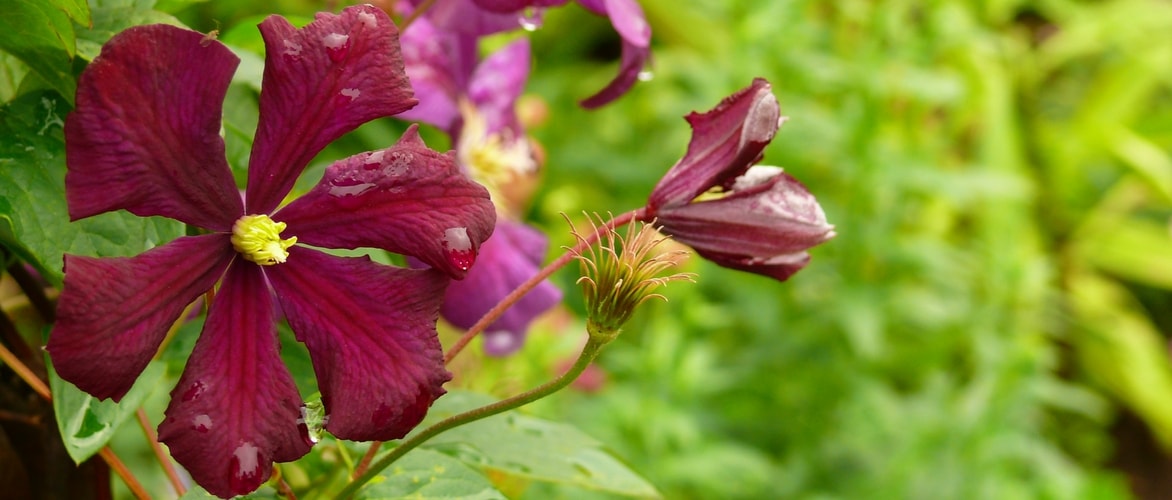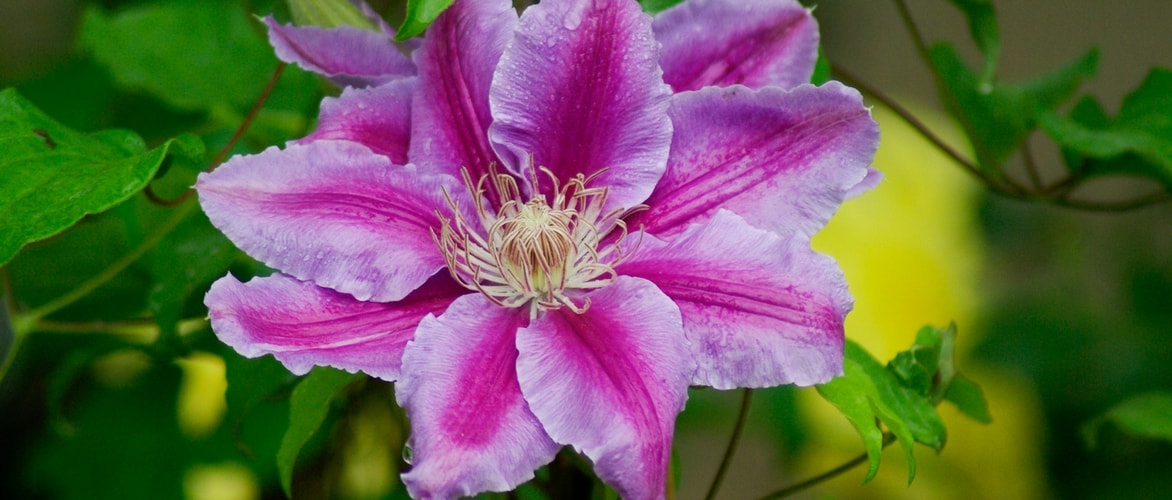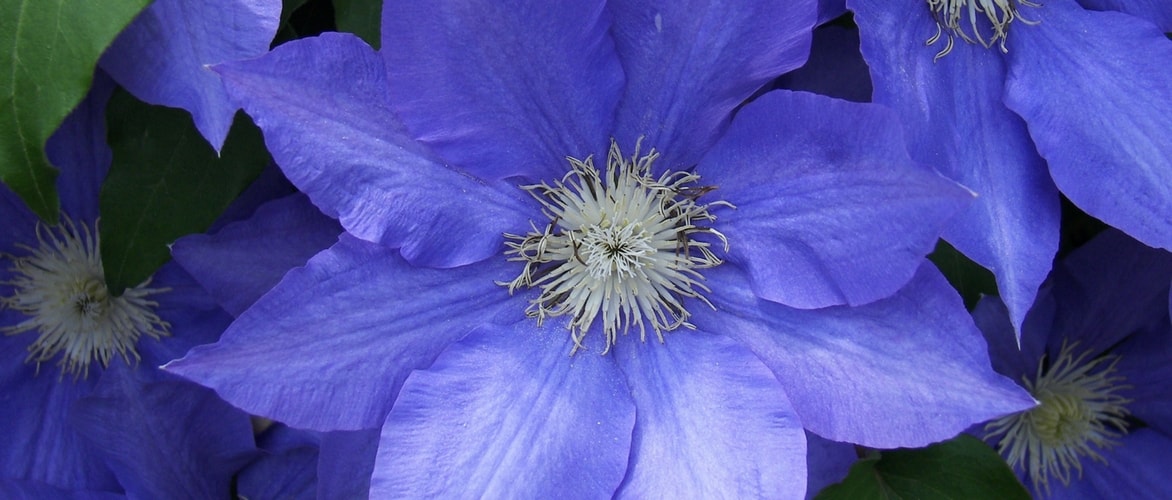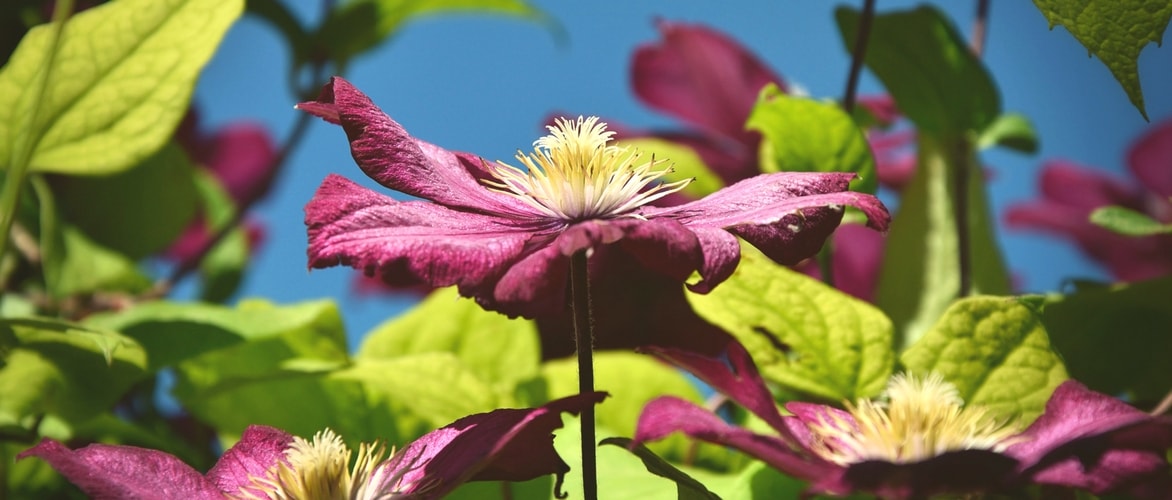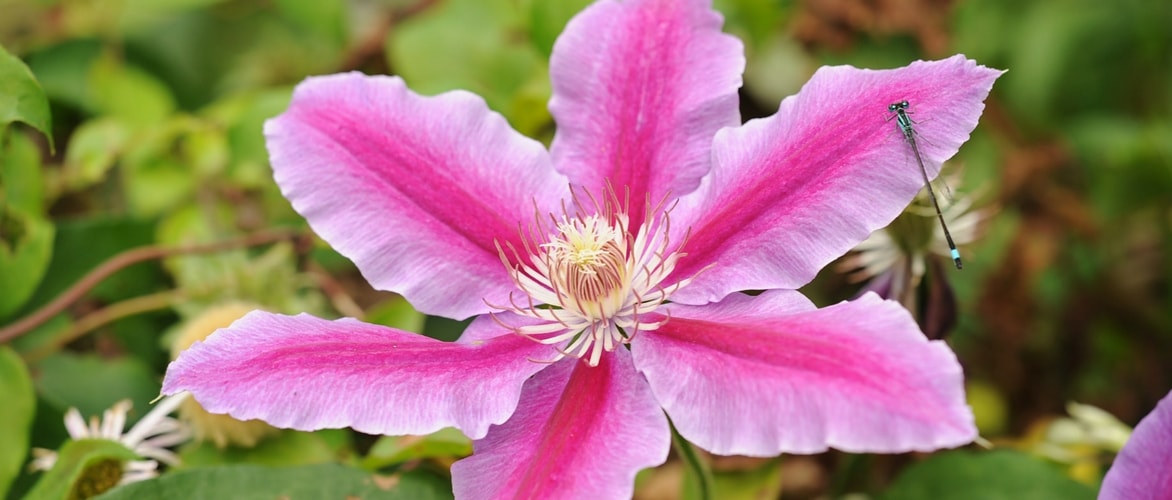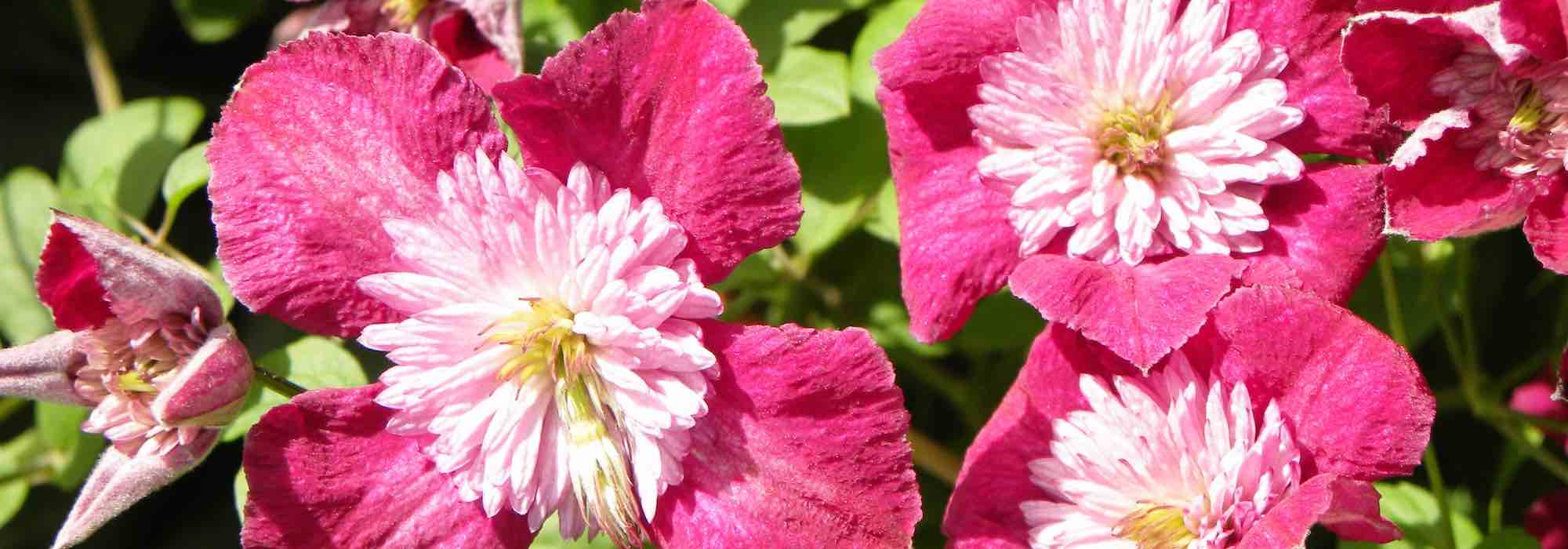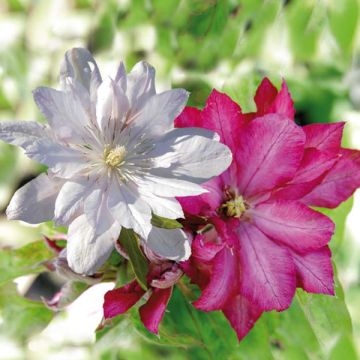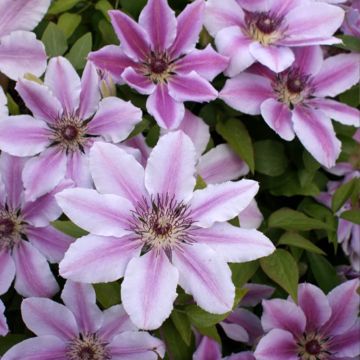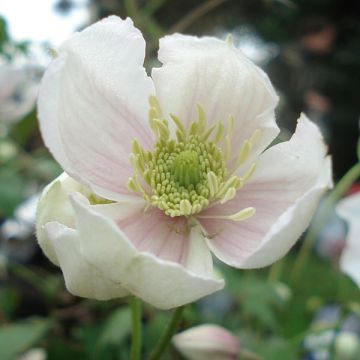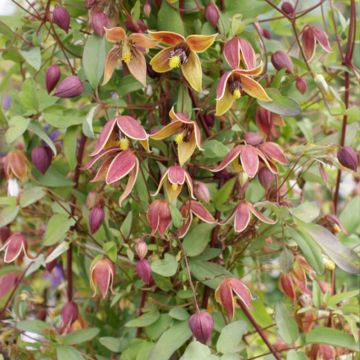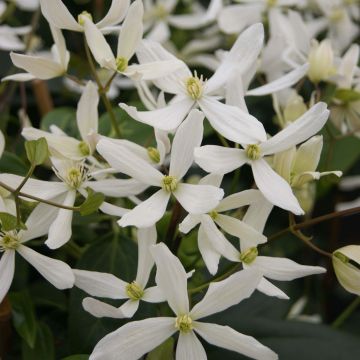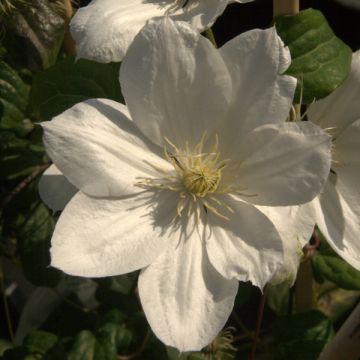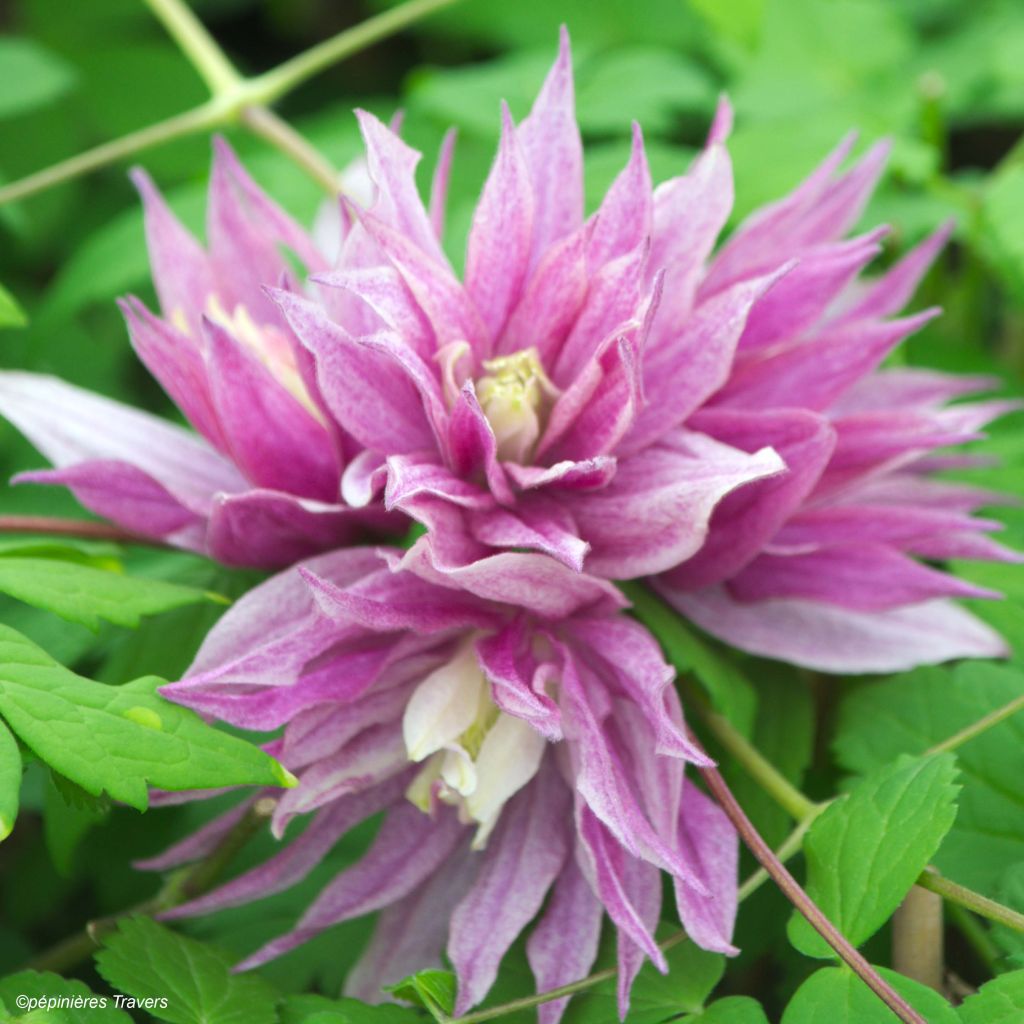

Clematis macropetala Purple Dream
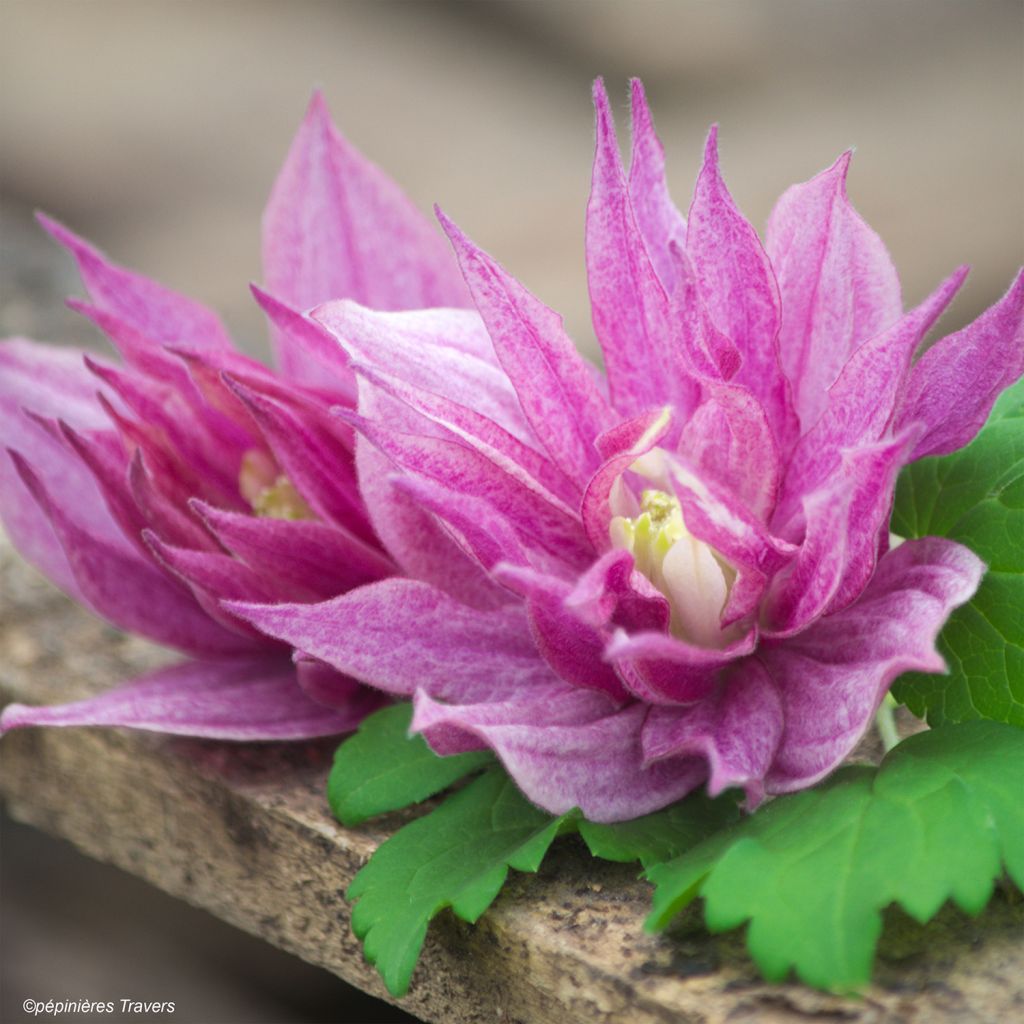

Clematis macropetala Purple Dream
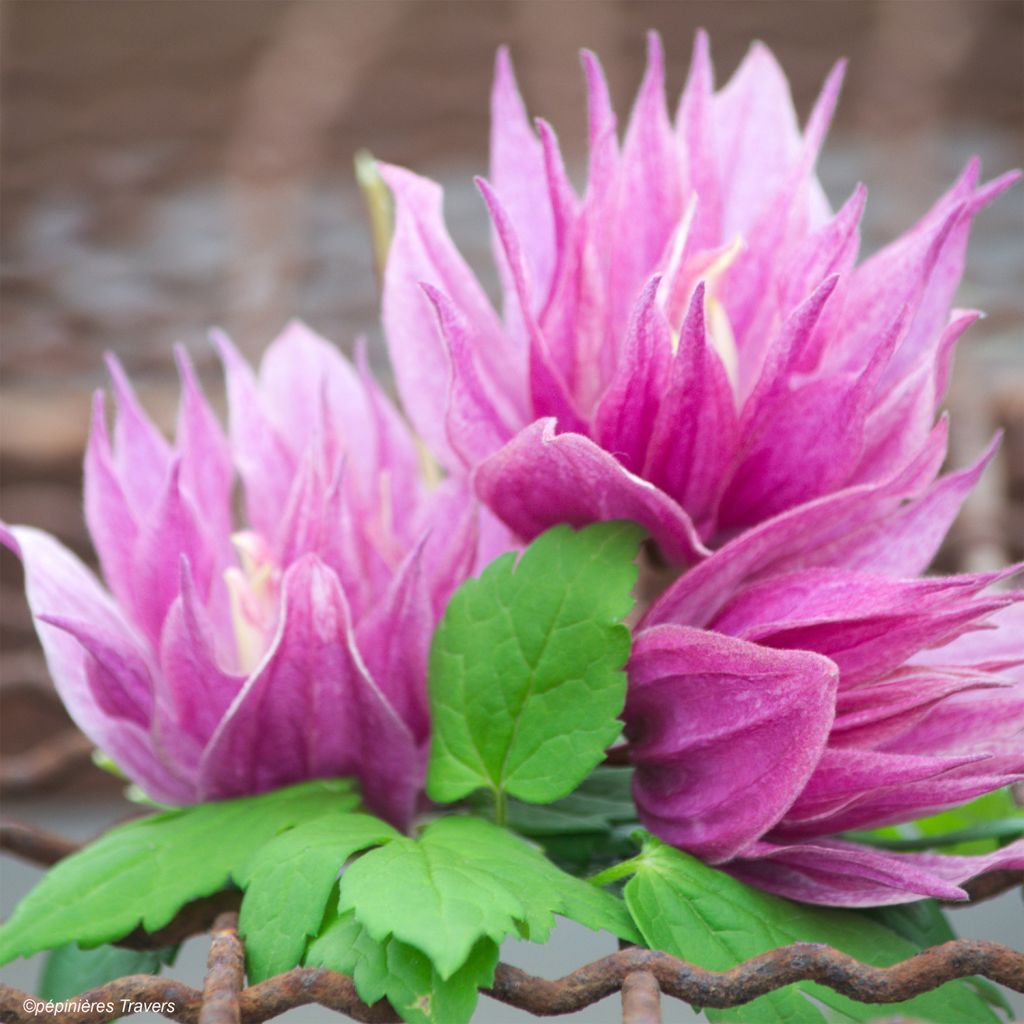

Clematis macropetala Purple Dream
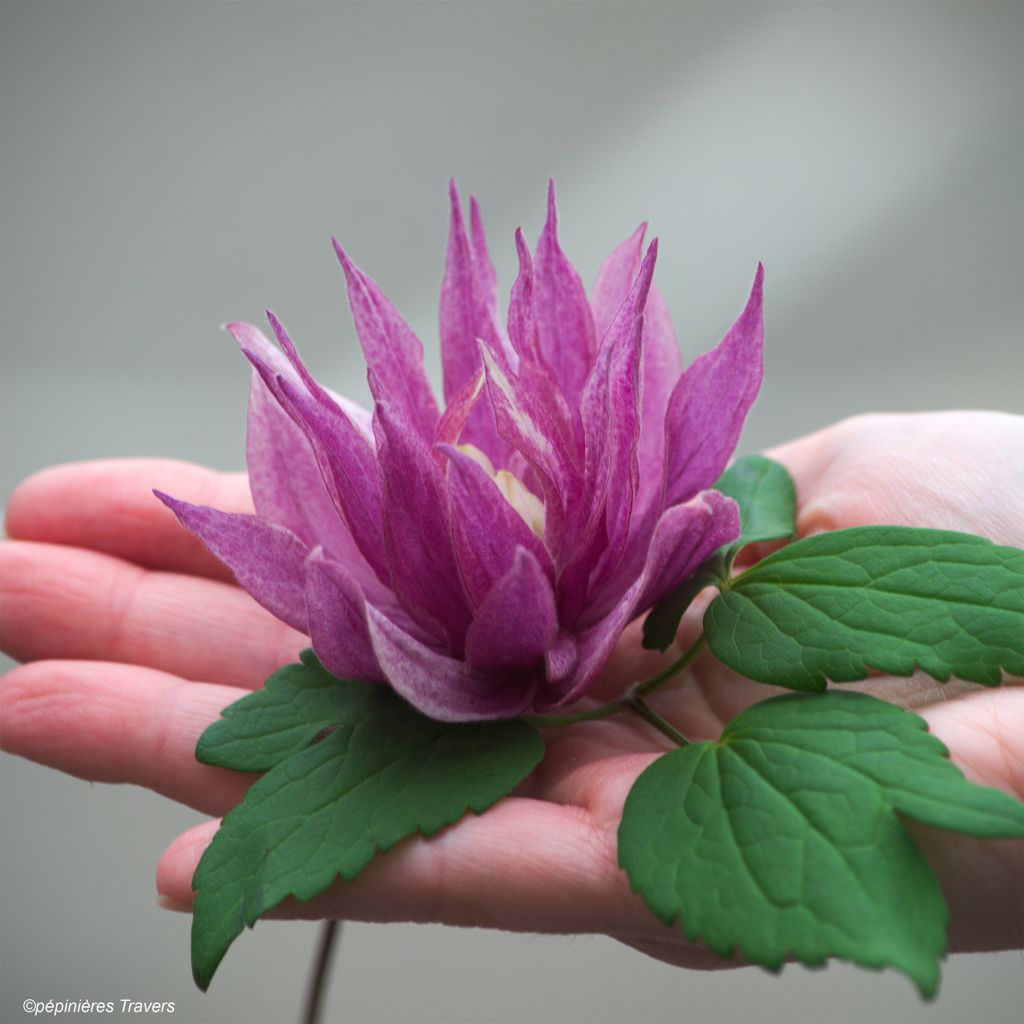

Clematis macropetala Purple Dream
View more pictures
Hide images
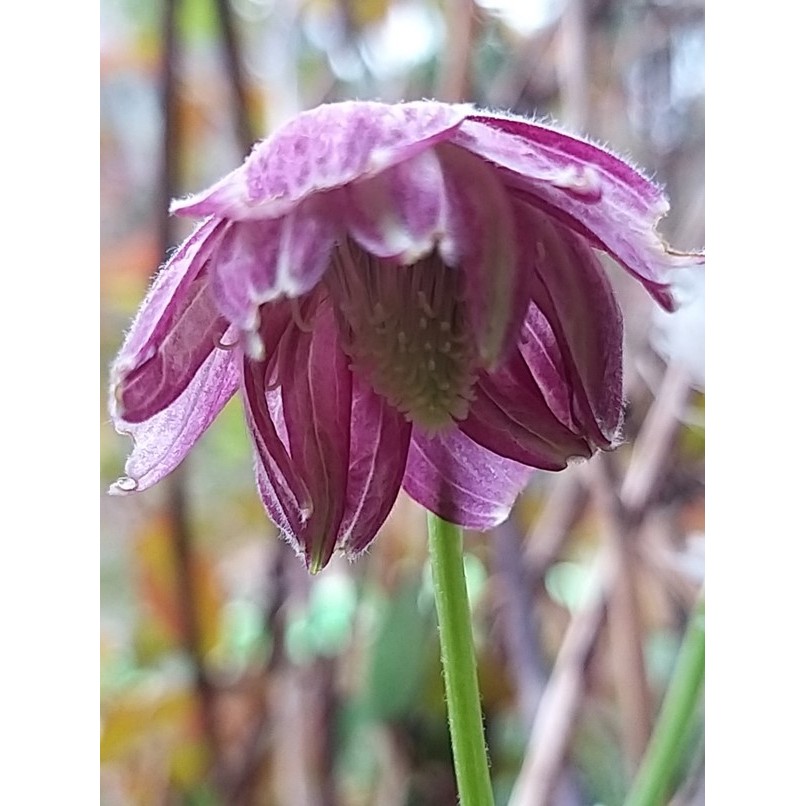
Thierry P.

Flowering in February - image 1
Thierry P. • 84 FR
Clematis macropetala Purple Dream
Clematis macropetala Purple Dream
Downy Clematis, Large-petaled Clematis
Thanks to Victorien (order preparation & quality control) and Thibault (shipping service), the received clematis has no foliage and appears "very dry". Planted at the base of a climbing Iceberg rose and some other companions. Now patiently waiting for spring recovery... (or not...).
Thierry, 13/12/2019
Special offer!
Receive a €20 voucher for any order over €90 (excluding delivery costs, credit notes, and plastic-free options)!
1- Add your favorite plants to your cart.
2- Once you have reached €90, confirm your order (you can even choose the delivery date!).
3- As soon as your order is shipped, you will receive an email containing your voucher code, valid for 3 months (90 days).
Your voucher is unique and can only be used once, for any order with a minimum value of €20, excluding delivery costs.
Can be combined with other current offers, non-divisible and non-refundable.
Why not try an alternative variety in stock?
View all →This plant carries a 6 months recovery warranty
More information
We guarantee the quality of our plants for a full growing cycle, and will replace at our expense any plant that fails to recover under normal climatic and planting conditions.
Would this plant suit my garden?
Set up your Plantfit profile →
Description
The Clematis 'Purple Dream' is a clematis derived from C.macropetala, a new cultivar obtained in Poland that is making a very noticeable appearance throughout Europe. This beautiful spring variety surprises and charms, thanks to its large trailing and double flowers, of a pink-purple colour, which bloom on a tender green foliage. The flowers are followed by a particularly ornamental fruiting, with hairy silver pompoms. This charming vine is perfectly hardy. It thrives in full sun or partial shade, in ordinary but well-drained soil.
The genus Clematis belongs to the Ranunculaceae family. 'Purple Dream' is a horticultural variety that belongs to the clematis that flower in spring on the current year's growth. It is a semi-woody, climbing or creeping perennial plant, which will reach 3m (10ft) in height, with a spread of 1m². From its ancestors originating from northern China, Siberia, and Mongolia, this delicate-looking plant has inherited great robustness. It is not afraid of late frosts.
This clematis bears macropetala-type flowers, large in size, 10 cm (4in) in diameter, from the month of March in mild climates and until May, sometimes with a second flush in summer on new growth. The bisexual flowers are solitary or grouped in clusters, and inclined downwards. They have numerous thin and delicate tepals, gathered in a bell shape, with a light purple colour and a slightly pink base. The flowering is followed by decorative feather-like fruits in a greyish silvery colour, which persist on the plant for a long time, until winter. The deciduous leaves are finely cut, with 3 to 5 tender green leaflets. This clematis clings to its support or the host plant through petioles transformed into tendrils.
Plant your clematis alongside your roses and other climbing plants to extend the flowering of your walls and pergolas until the end of summer. It is a genus rich in diversity, with varieties of all colours, shapes, and sizes. Take advantage of their easy cultivation to give your garden a romantic and bohemian touch. 'Purple Dream' is easily grown in the garden, and thanks to its relatively modest size, it will also thrive in a pot on a balcony or next to an entrance door to welcome visitors with its early and spectacular flowering. It can also be allowed to run on the ground, where it will form an original blooming carpet in spring.
Clematis macropetala Purple Dream in pictures
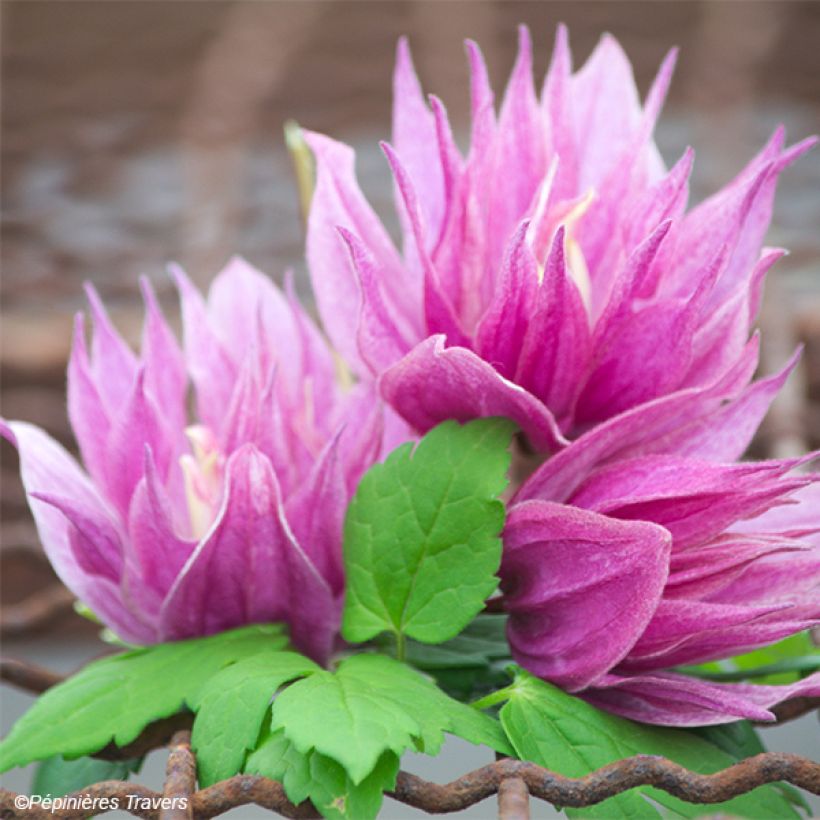

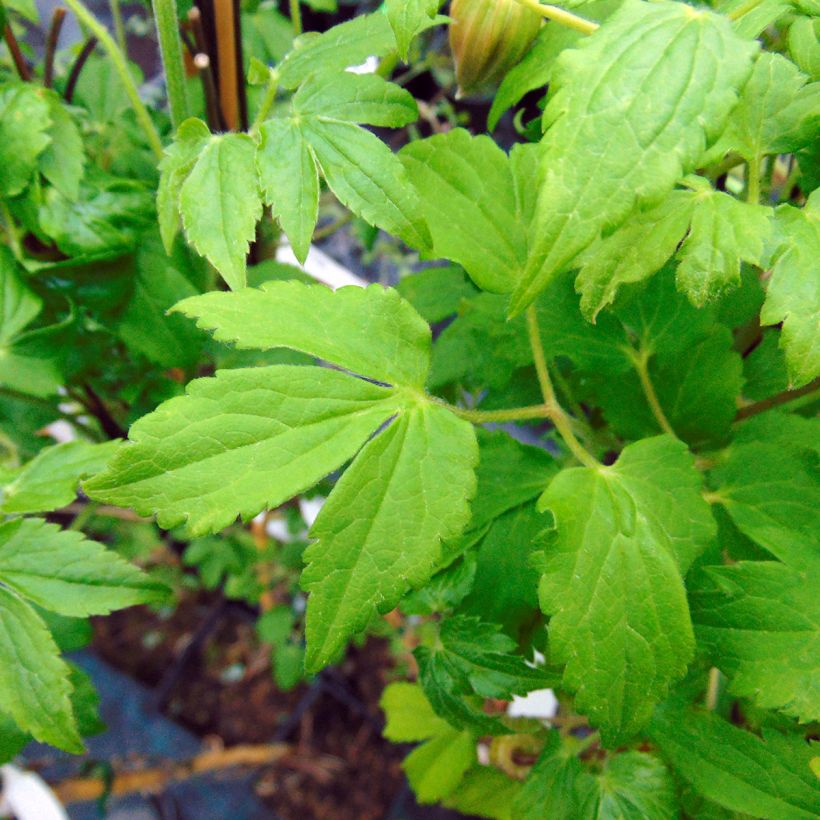

Plant habit
Flowering
Foliage
Botanical data
Clematis
macropetala
Purple Dream
Ranunculaceae
Downy Clematis, Large-petaled Clematis
Cultivar or hybrid
Other Clematis Atragene
View all →Planting and care
Plant the 'Purple Dream' clematis preferably in full sun, in a fertile, humus-rich, well-drained soil, shading the roots and base of the stem (with a flat tile, for example). Herbaceous species prefer full sun and wilt in overly moist soil.
Install your plant by covering the root ball with 3 cm (1in) of soil, in bed worked to 20 cm (8in), lightened with good compost. During the first few weeks, water regularly but be careful of stagnant water, as it can cause collar rot. Cover the base of climbing clematis with a small mound of soil, in order to reduce the risk of wilting while promoting the growth of vigorous shoots from the stump. After planting, prune the stems of deciduous climbing clematis to about 30 cm (12in) above a nice pair of buds. Mulch in February with garden compost or well-decomposed manure, avoiding direct contact with the stems. Train the stems, without tightening them, until the plant can grip onto its support. Clematis also enjoys growing freely on neighbouring plants.
This variety flowers in spring on the current year's growth, so prune it in June, after flowering, to 80 cm (0 to 32in) from the ground (slightly shorter on older subjects), once the plant is well established. Voles and grey worms can attack clematis and devour the stems. Aphids and greenhouse whiteflies are also potential parasites.
Planting period
Intended location
Care
Planting & care advice
-
, onOrder confirmed
Reply from on Promesse de fleurs
Similar products
Haven't found what you were looking for?
Hardiness is the lowest winter temperature a plant can endure without suffering serious damage or even dying. However, hardiness is affected by location (a sheltered area, such as a patio), protection (winter cover) and soil type (hardiness is improved by well-drained soil).

Photo Sharing Terms & Conditions
In order to encourage gardeners to interact and share their experiences, Promesse de fleurs offers various media enabling content to be uploaded onto its Site - in particular via the ‘Photo sharing’ module.
The User agrees to refrain from:
- Posting any content that is illegal, prejudicial, insulting, racist, inciteful to hatred, revisionist, contrary to public decency, that infringes on privacy or on the privacy rights of third parties, in particular the publicity rights of persons and goods, intellectual property rights, or the right to privacy.
- Submitting content on behalf of a third party;
- Impersonate the identity of a third party and/or publish any personal information about a third party;
In general, the User undertakes to refrain from any unethical behaviour.
All Content (in particular text, comments, files, images, photos, videos, creative works, etc.), which may be subject to property or intellectual property rights, image or other private rights, shall remain the property of the User, subject to the limited rights granted by the terms of the licence granted by Promesse de fleurs as stated below. Users are at liberty to publish or not to publish such Content on the Site, notably via the ‘Photo Sharing’ facility, and accept that this Content shall be made public and freely accessible, notably on the Internet.
Users further acknowledge, undertake to have ,and guarantee that they hold all necessary rights and permissions to publish such material on the Site, in particular with regard to the legislation in force pertaining to any privacy, property, intellectual property, image, or contractual rights, or rights of any other nature. By publishing such Content on the Site, Users acknowledge accepting full liability as publishers of the Content within the meaning of the law, and grant Promesse de fleurs, free of charge, an inclusive, worldwide licence for the said Content for the entire duration of its publication, including all reproduction, representation, up/downloading, displaying, performing, transmission, and storage rights.
Users also grant permission for their name to be linked to the Content and accept that this link may not always be made available.
By engaging in posting material, Users consent to their Content becoming automatically accessible on the Internet, in particular on other sites and/or blogs and/or web pages of the Promesse de fleurs site, including in particular social pages and the Promesse de fleurs catalogue.
Users may secure the removal of entrusted content free of charge by issuing a simple request via our contact form.
The flowering period indicated on our website applies to countries and regions located in USDA zone 8 (France, the United Kingdom, Ireland, the Netherlands, etc.)
It will vary according to where you live:
- In zones 9 to 10 (Italy, Spain, Greece, etc.), flowering will occur about 2 to 4 weeks earlier.
- In zones 6 to 7 (Germany, Poland, Slovenia, and lower mountainous regions), flowering will be delayed by 2 to 3 weeks.
- In zone 5 (Central Europe, Scandinavia), blooming will be delayed by 3 to 5 weeks.
In temperate climates, pruning of spring-flowering shrubs (forsythia, spireas, etc.) should be done just after flowering.
Pruning of summer-flowering shrubs (Indian Lilac, Perovskia, etc.) can be done in winter or spring.
In cold regions as well as with frost-sensitive plants, avoid pruning too early when severe frosts may still occur.
The planting period indicated on our website applies to countries and regions located in USDA zone 8 (France, United Kingdom, Ireland, Netherlands).
It will vary according to where you live:
- In Mediterranean zones (Marseille, Madrid, Milan, etc.), autumn and winter are the best planting periods.
- In continental zones (Strasbourg, Munich, Vienna, etc.), delay planting by 2 to 3 weeks in spring and bring it forward by 2 to 4 weeks in autumn.
- In mountainous regions (the Alps, Pyrenees, Carpathians, etc.), it is best to plant in late spring (May-June) or late summer (August-September).
The harvesting period indicated on our website applies to countries and regions in USDA zone 8 (France, England, Ireland, the Netherlands).
In colder areas (Scandinavia, Poland, Austria...) fruit and vegetable harvests are likely to be delayed by 3-4 weeks.
In warmer areas (Italy, Spain, Greece, etc.), harvesting will probably take place earlier, depending on weather conditions.
The sowing periods indicated on our website apply to countries and regions within USDA Zone 8 (France, UK, Ireland, Netherlands).
In colder areas (Scandinavia, Poland, Austria...), delay any outdoor sowing by 3-4 weeks, or sow under glass.
In warmer climes (Italy, Spain, Greece, etc.), bring outdoor sowing forward by a few weeks.






























